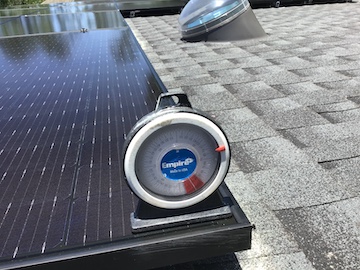Many people interested in solar panels understand the concept in broad terms – the sun’s energy is captured and powers a home. This is an oversimplification of the solar process. While the massive levels of engineering used to create photovoltaic is hard for most to comprehend, the simplicity of the delivery is stunning. Capturing and utilizing this energy has been a human pursuit for as long as people sought energy. The sun’s radiation is a near-endless source and when people have effective means of capture, they save money while helping preserve the environment. Understanding the process helps during consultation and installation.
The Photovoltaic (PV) Effect
It seems hard to believe, but the basis of solar power’s discovery is 1839. When he was 19, French scientist Edmond Becquerel performed an experiment where he discovered a cell produced more electricity as it was exposed to light. Industrialization of this discovery occurred in 1954 when scientists created the silicon PV cell. It was here the sun’s power became harnessed. The use of sunlight to power every day devices became a reality. While the size and efficiency of the PV cells changed, what didn’t is their effect. The PV effect of converting light into energy is mass produced with great efficiency.
Production of Electricity
Just like hydrothermal energy relies on the power of water to spin a turbine, solar works similarly. The idea is light causes a reaction, and harnessing the energy from the reaction is how we use electricity. In the case of PV panels, the process is simple. Light penetrates thin glass on top of silicon, electrons shake loose. The movement of electrons creates the current. At this point, the current harnessed is direct current (DC). It’s sent to an inverter which turns it into alternating current (AC). Plugging anything into a wall means alternating current heads from the socket to the device. This is the simple way the sun delivers electricity to a home.
Power on a Cloudy Day
There’s a myth that solar power only works when the sun is bright and shining. This is untrue. Because of the semiconductor efficiency in PV cells, it’s possible to power a home with a smattering of sunlight. The truth is the sun’s power is greater than anything man currently produces. Think of a sunburn as an example – the suns rays travel millions of miles and if a person doesn’t wear sunscreen, they burn. On a cloudy day, there’s less sunlight but it’s still more than enough to power a home. As solar technology continues its inevitable improvement, the slightest of the sun’s power will do much to improve and illuminate our lives.
The continued development of solar technology is incredibly exciting. Solar capture today is far beyond its capabilities from just a few years ago. Check out the different types of PV panels offered by SuperGreen Solutions, and learn how to choose the right solar partner tomorrow.





